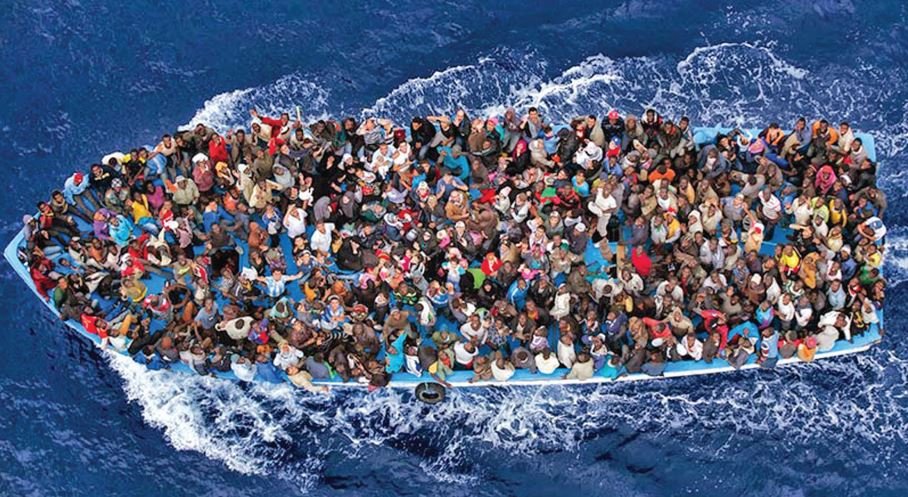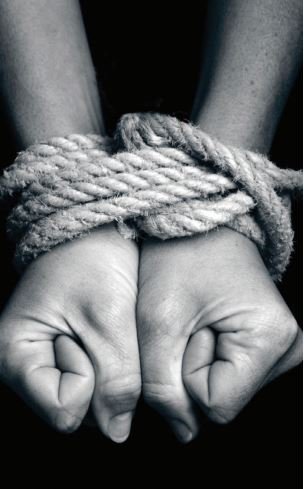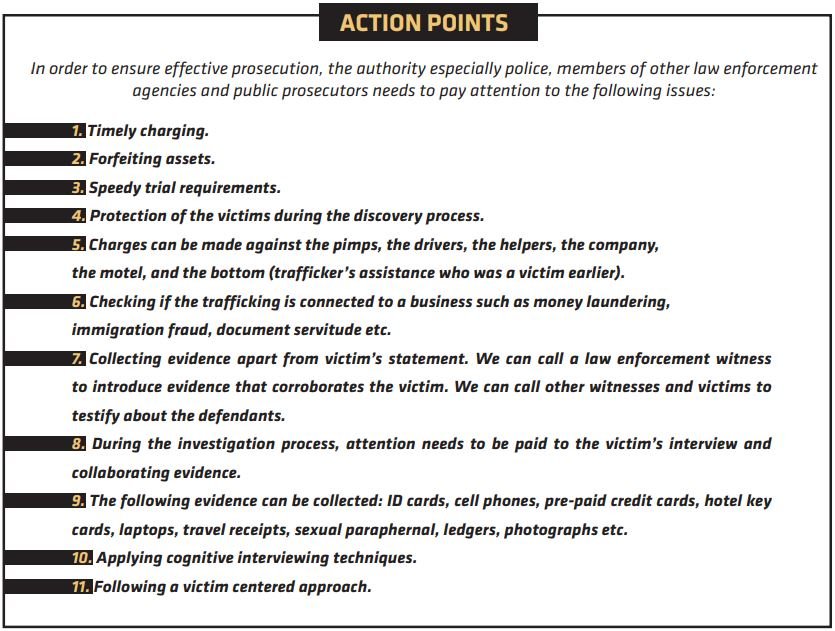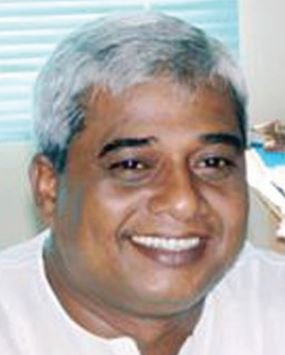In the din and bustle of the discussion on trafficking incidents, a critical issue within the overall trafficking debate in Bangladesh gets neglected: the prosecution of traffickers. This article builds a case for a deeper investigation and analysis of the problem. It intends to explore on the challenges in Bangladesh of prosecuting traffickers, and the action points for the authority in order to ensure successful prosecution of trafficking cases, writes DR. MD. MAHBUBUR RAHMAN.
Trafficking in persons to and from Bangladesh is characterised by an increase in the trend of trafficking incidents, irregular maritime movements, and operation of smuggling networks. Different dynamics of trafficking in persons are active in Bangladesh among which the lack of prosecution of traffickers is notable. Due to these dynamics of trafficking, Bangladesh may fall into ‘tier 3’ from ‘tier 2’ ranking by US government. It is to be noted that a downgrade to tire 3 can have serious consequences on the country, including restrictions on some forms of assistance. In the given context, there is some serious work to be done to address the issue, especially, punishing the traffickers. Noting that although many thousands of people have been trafficked out of Bangladesh during the past years, only a very few people were convicted for being involved with trafficking in persons.
LEGAL ISSUES
The trafficking context is complex in Bangladesh. In some cases, it is transnational. Among other reasons, lack of access to services and employment creates a level of vulnerability among a certain group of population which later leads to transnational trafficking in persons. In order to counter trafficking in persons, Bangladesh has enacted the Prevention and Suppression of Human Trafficking Act 2012. All persons in Bangladesh are persons of concern under this law. One of the limitations of the Act is that under this law if there is no bad intension, it is not trafficking. Although this law calls for establishment of an Anti-Human Trafficking Offence Tribunals, any tribunals is yet to be established.
YOU CAN ALSO READ: WOMEN’S POVERTY, MIGRATION AND POLICY: REFLECTIONS IN THE CONTEXT OF BANGLADESH
A financial punishment (minimum BDT 50,000) is mandatory under this law along with physical punishment. This law grants bail for exceptional cases. The law gives 120 days to an Investigation Officer (IO) and 180 days to a Judge for concluding a trial. However, saving clauses are there in the law. Therefore, in many cases a trial is not concluded during the stipulated time. It has been noticed that in many cases the victims are not interested to file a case under this law. A beauty of the law is that this is the only law in Bangladesh that provides compensation to the victims. As per Section 39, both the civil cases and criminal cases can be filled under this law. Any person can file a criminal case under this law. However, only the victim can file a civil case to get the compensation.

POLICY ISSUES
On the top of a national law, there is a national plan called the National Plan of Action (NPA) for Prevention and Suppression of Human Trafficking. This NPA is framed for five-yearly duration rather than previously set three-yearly duration. It includes programmes, project and strategies of combating all forms of internal and international human trafficking. Much importance was placed on developing social and economic safety nets. Some specific interventions to combat trafficking in children have been included. Special attention has been given to harmonize the NPA with the Sustainable Development Goals (SDG) indicators. It has been hoped that this NPA will help to determine different actors’ role in counter-trafficking. However, the plan fails to convict the traffickers in Bangladesh. The conviction rates are extremely low in trafficking cases in Bangladesh despite having the plan. It calls for the setting up of special tribunals in trafficking prone districts as well as government and non-government cooperation to monitor progress. It also seeks the speeding up of the prosecution process, particularly for labour recruiters and traffickers, as well as witness protection and an awareness campaign in vulnerable communities.

PROBLEMS IN BANGLADESH IN PROSECUTING TRAFFICKERS
A good number of problems in Bangladesh in prosecuting traffickers is related to court. For example, special human trafficking tribunals are not yet established although it is in the law. As a result, the human trafficking cases are tried by the Women and Children Repression Prevention Tribunals which normally takes a long time to complete the trafficking cases. In many cases, the court’s summons are not received on time by the witnesses. In some cases, the cases are not recorded properly in the court and the evidence of cases is not maintained properly. In most cases, trial proceedings take extensive periods of time, and as a result, victims lose their interest in getting justice. Also, the physical court environment is not gender friendly.
Some problems are related to the police station. For example, in some cases, the investigation officer (IO) demands money from the victims. Apart from that some police officers have no clear idea about human trafficking prevention law. There are other issues which create obstacles to the prosecution process. For example, in some cases, political leaders try to conceal the facts. Medical reports to support evidence are not timely available at the court. Police and public prosecutors do not get proper instructions for filing of the cases from the Police Super. Due to delayed trial proceedings, the plaintiffs are reluctant to attend the trial proceedings. Case filing is delayed because of lack of coordination between hospitals and police stations. In ongoing cases, sometimes the plaintiff or victim is pressured by the accused to settle the case down.
Prosecution of traffickers is also linked to the proper understanding of the difference between trafficking and migrant smuggling. Because if the incident is not properly reported then the case would not be properly filed and consequently the final prosecution would not properly be done. It has been observed that the law enforcement officials especially, police officers and the coast guards, and some journalists do not understand human trafficking clearly and conflates it with migrant smuggling. In a good number of media reports, all the survivors are reported as the victims of human trafficking while some of them might be the victims of migrant smuggling while they are trying to reach other country through irregular maritime channels. It has further been noted that some of the media reports violate the rule mentioned in section 37 (2) of the Prevention and Suppression of Human Trafficking Act, 2012 of Bangladesh by publishing the photographs of victims of human trafficking.

Noting that a victim centered approach can only be followed if the authority can build a trustworthy, strong and caring relationship with the victims; understand why the victims behave in a particular way that they do; respect the victims’ cultural values; be aware of the victims’ personal cultural beliefs and expectation; serves as a partner to the victims; be aware of when communication has potentially broken down; understand personal space; should not use slang or words that are offensive; understand the way culture affects an individual’s understanding of traumatic events; and recognize the imbalance of power and issues of oppression and privilege.
WAY FORWARD
Forming of a Counter Trafficking Department under the Ministry of Home Affairs can play a key role to ensure effective prosecution of the traffickers by facilitating dialogue, planning, and support for addressing trafficking. It should deal with trends and analysis, gaps, needs and priorities. It can conduct risk analysis, identify knowledge gaps, and take stock on the current situation and capacity. Currently, coherent analysis and data is missing. It will compile good practices and knowledge management. It will mainstream the counter trafficking coordination mechanisms. It will facilitate discussions amongst protection actors to draw out current practices to mitigate and prevent trafficking dynamics. It will also invite stakeholders to gather and share good practices, good coordination mechanisms and proposed effective responses. It will develop a collective strategy to respond to trafficking and to facilitate a systemic response and guidance on recommended good practices and joint response mechanisms. It will provide for trainings on identification, referral, and other standards to support all actors to mitigate exploitation and trafficking. Last but not least, it will coordinate and plan joint engagements with local and national government authorities and other key actors in order to facilitate the effective prosecution of trafficking cases.
Binoy Krishna Mallick, the Executive Director of Rights Jessore, a non-governmental organization that specializes in preventing human trafficking and providing support to trafficking victims, shared his perspective on the trafficking problem in Bangladesh during an exclusive interview with PRESS XPRESS

Executive Director of Rights Jessore
1. What according to you are the key cause factors to Trafficking in Persons in Bangladesh?
The primary factors contributing to human trafficking in certain regions are limited understanding of the root causes and consequences of trafficking and unsafe migration, poverty, gender bias, domestic violence, and lofty aspirations. Those who facilitate human trafficking in these areas have expanded their reach by enticing people with high-paying jobs overseas and then entrapping them in their trafficking schemes.
2. What are the most common forms of human trafficking?
According to 2022 UN data, women and girls are the primary targets of traffickers, with five out of every ten detected victims being adult women and two being young girls. Sexual exploitation is the most common form of trafficking for women and girls, while forced labor is the predominant type of trafficking for men and boys. The following are typical types of human trafficking:
- Sex trafficking
- Forced labor trafficking
- Forced marriage trafficking
- Child trafficking
- Forced begging trafficking (less common)
3. Do many traffickers get caught and convicted?
The conviction rate for human traffickers is significantly low for various reasons. In the previous year, Jashore Chief Judicial Magistrate Court’s Tribunal 1 and 2 dealt with 41 trafficking cases, out of which 15 cases were withdrawn due to out-of-court settlements and insufficient evidence, and the remaining cases are still ongoing. Last year, Rights Jessore filed 16 cases with the support of various donor projects, and all of these cases are currently being prosecuted.
4. Why convictions are rare in Bangladesh?
In Bangladesh, there are several factors contributing to the low rate of convictions for human trafficking, including:
- Limited understanding of legal procedures
- Insufficient evidence or documentation
- Out-of-court settlements facilitated by police and community/political leaders
- Lengthy judicial procedures
- Threats from traffickers after filing a case
- Political pressure to withdraw a case, as traffickers may have influence over political leaders
- Social stigma, causing victims to remain silent and not report trafficking incidents
- Economic hardship, leading victims and their families to refrain from filing a case against traffickers
5. Is there a legal instrument to combat human trafficking in Bangladesh?
The Prevention and Suppression of Human Trafficking Act (PSHTA) of 2012 is a legal instrument that addresses human trafficking in Bangladesh. To effectively implement this law, the government developed a National Action Plan (NAP) for 2018 to 2022. Recently, the government has undertaken efforts to extend this NAP through 2025 by revising its 2018-2022 anti-trafficking NAP.


